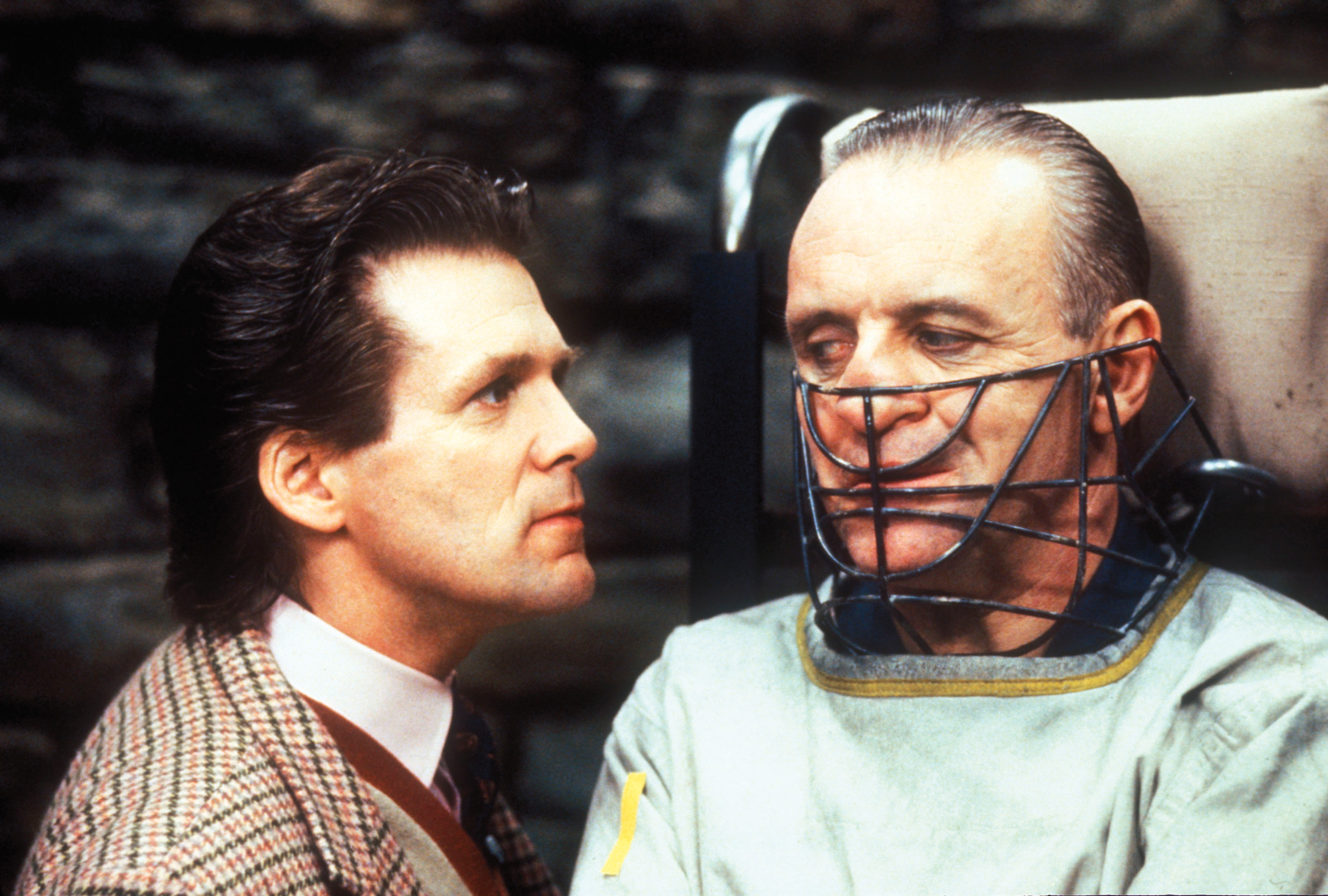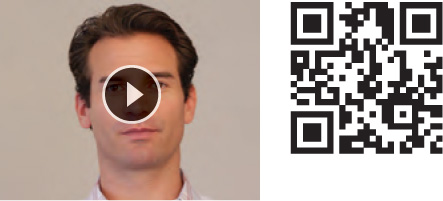13.1 Psychological Disorders and Abnormal Behavior
psychological disorders
WINTER NIGHT
Psychological Disorders and Abnormal Behavior
WINTER NIGHT
It was a clear, cold night in January when 17-year-old Ross Szabo decided to end his life. Nothing bad had happened that day. Ross had woken up, gone to school, played in a basketball game (a victory for his team), and then gone with his buddies to Friendly’s restaurant for mozzarella sticks and a sundae. But for some reason, on that clear winter night, Ross decided he could no longer take it. As he gazed out the window at Pennsylvania’s snow-blanketed cornfields, an overwhelming sense of calm descended on him.
For the 4 months leading to that moment, Ross had been free-falling into an abyss of sadness. No one knew—not his parents, his brothers, or his friends—because Ross was a good actor. Around other people, he was smiling, joking, acting like a normal teenager. But every time he was alone, he was crying. As he puts it, “I had been thinking about suicide 24 hours a day by that point.”
Some people say suicide is a selfish act; a person ends his own suffering and destroys the lives of those left behind. Ross truly believed his friends and family would be happier without him. Maybe you’re the problem; maybe you’d be doing them a favor by removing the problem, Ross remembers thinking to himself. “I didn’t think I would have a funeral,” he says. “I didn’t think anyone should care about me.”
When Ross got home, he tried calling a friend but was too upset to speak. So he walked into the bathroom and prepared to kill himself. Fortunately, his father was home and could tell Ross was in distress. He convinced his son to come downstairs and talk. “If you don’t take me to the hospital right now, I’m going to kill myself,” Ross said as he walked into the kitchen. Instead of returning to school the next day, Ross was admitted to the hospital.
Note: Ross Szabo’s story is based on personal communications with Ross Szabo and various passages from the book he co-authored with Melanie Hall: Behind Happy Faces (Szabo & Hall, 2007). Unless otherwise specified, quotations attributed to Ross Szabo and Melissa Hopely are personal communications.
LEARNING OBJECTIVES
after reading and studying this chapter, you should be able to:
- LO 1 Define psychological disorders and the criteria used to identify abnormal behavior.
- LO 2 Recognize limitations in the classification of psychological disorders.
- LO 3 Summarize the etiology of psychological disorders.
- LO 4 Define and illustrate an understanding of anxiety disorders and their causes.
- LO 5 Summarize the symptoms and causes of obsessive-compulsive disorder.
- LO 6 Summarize the symptoms and causes of major depressive disorder.
- LO 7 Compare and contrast bipolar disorders and major depressive disorder.
- LO 8 Recognize the symptoms of schizophrenia.
- LO 9 Analyze the biopsychosocial factors that contribute to schizophrenia.
- LO 10 Differentiate between antisocial and borderline personality disorders.
- LO 11 Identify differences among dissociative disorders.
What’s Normal, What’s Not
LO 1 Define psychological disorders and the criteria used to identify abnormal behavior.
A year-and-a-half earlier, Ross had been diagnosed with bipolar disorder, a condition marked by dramatic mood swings. We all have our ups and downs—periods of feeling happy, sad, anxious, or irritable—but the emotional roller coaster of bipolar disorder is something quite different. We will explore bipolar disorder in greater detail later in the chapter, but first let’s familiarize ourselves with the broader focus of this chapter: psychological disorders.

A psychological disorder is a set of behavioral, emotional, and cognitive symptoms that are significantly distressing and disabling in terms of social functioning, work endeavors, and other aspects of life. These symptoms are not the result of religious or spiritual experiences; nor are they mere departures from cultural norms. And although stressors can trigger symptoms of psychological disorders, these conditions primarily result from disturbances in psychological, biological, and developmental processes (American Psychiatric Association [APA], 2013).
The academic field devoted to the study of psychological disorders is generally referred to as abnormal psychology. Researchers and scholars in abnormal psychology typically have backgrounds in clinical psychology, or psychiatry if they obtained medical degrees.
CONNECTIONS
The field of abnormal psychology encompasses the study of psychological disorders as well as their treatment. In Chapter 1, we described various mental health professionals, and the training they require. The current chapter focuses on abnormal psychology, a subfield many people associate with the word psychology.
Defining Abnormal Behavior
Psychologists and other mental health professionals determine if a behavior is abnormal using a variety of criteria (TABLE 13.1). Perhaps the most straightforward criterion is typicality (or lack thereof). An atypical behavior is rarely seen, or infrequent. The profound sadness Ross experienced is relatively rare. Most people experience sadness, even deep sadness at times, but suicidal thoughts are unusual. Although the typicality criterion is useful, it is not enough to confirm the existence of a psychological disorder. A child prodigy who learns to play the piano like a virtuoso by the age of 5 is atypical, but his rare talent does not indicate a psychological disorder.
| Criteria | What does it mean? |
|---|---|
| Typicality | Degree to which behavior is atypical, meaning rarely seen or statistically abnormal |
| Dysfunction | Degree to which behavior interferes with daily life and relationships |
| Distress | Degree to which behavior or emotions cause an individual to feel upset or uncomfortable |
| Deviance | Degree to which behavior is considered outside the standards or rules of society |
| Defining abnormal behavior is challenging, and psychologists use a variety of criteria when evaluating behaviors. | |

We should also consider maladaptive behaviors, or actions that run counter to one’s best interests. The degree of risk associated with these maladaptive behaviors (both to oneself and others) is often used by professionals to determine if a person needs to be admitted to a hospital. In Chapter 14, you can see how Dr. Dan Foster used this criterion in deciding whether to seek hospital care for a client with schizophrenia. We should point out, however, that maladaptive behavior is not always a sign of abnormality. People without disorders exhibit maladaptive behaviors all the time. Just think of the child who occasionally has a tantrum, or the adult who drowns his sorrows in alcohol one night.
To arrive at a more definitive determination of abnormal behavior, mental health professionals typically rely on three criteria (in addition to typicality): dysfunction, distress, and deviance, or the “3 Ds” (APA, 2013; Wakefield, 1992).
The first D, dysfunction, indicates the degree to which a behavior interferes with daily life and relationships. Ross’s depression sometimes rendered him unable to get out of bed; this type of behavior certainly has the potential to interfere with daily life. But dysfunction alone does not confirm the presence of a psychological disorder. If you stay up all night to meet a deadline, you might experience temporary dysfunction in memory and attention, but that doesn’t mean you have a disorder.
Ross: How do you explain your ability to hide what was going on with your bipolar disorder?
The second D is personal distress. Feeling regularly upset or uncomfortable because of unwanted behaviors or emotions is another feature of abnormality, and it’s not always evident from the outside. Prior to his suicide attempt, Ross appeared to be happy and healthy, but inside he was suffering. There are times, however, when distress does not accompany a disorder. When Ross experienced the euphoric highs of bipolar disorder, he may not have been distressed at all. People with psychological disorders do not always have the insight to recognize that a problem exists.
The third D is deviance, or the degree to which a behavior is considered to be outside the standards or rules of a society. Behaving in a way that does not conform to social expectations might be indicative of a psychological disorder. Individuals who are euphoric might talk too loudly in a library or church where people are expected to be quiet, or become so disinhibited that they walk around naked in a public place. Once again, the presence of this sole criterion does not necessarily indicate a psychological disorder. Political protesters, for example, may deliberately break social norms to make a statement. Many participants in Occupy Wall Street chose to set up camp and sleep in public places normally used by others just passing through. Their behavior was deviant but not necessarily suggestive of a psychological disorder.
We should note that conceptions of abnormality and definitions of psychological disorders have changed during the course of history. Homosexuality was once considered a psychological disorder, but this notion was overturned in the 1970s and 1980s by psychiatrists and other mental health professionals (Silverstein, 2009), in part because cultural norms had changed. Always remember that the definition or meaning of “abnormal” is relative to place and time.
It’s a Continuum
Given how psychologists define abnormal behavior, understand that anyone can have experiences similar to the symptoms of psychological disorders. This is because there is a continuum for many behaviors and feelings: Those at one end are generally considered normal, and those at the other end abnormal. Ross’s profound sadness would likely fall at the abnormal end of the continuum, whereas a teary farewell to a close friend who is moving away would be at the normal end.
Culturally Defined
The definition of mental health is not the same for all groups of people. As the biopsychosocial model reminds us, we must consider culture and other social influences when trying to understand concepts like “normal” and “abnormal.” Some disorders and symptoms are unique to particular cultures. Koro, for example, is an episode of intense anxiety observed mainly in Southeast Asia, although similar conditions have been documented in China. The main feature of koro is the unrealistic and intense fear that sexual organs will be pulled into the body, perhaps resulting in death (APA, 2013; Roy et al., 2011). A man with koro might be exceedingly anxious about the idea of his penis disappearing into his abdomen, whereas a woman might fear that her nipples will be pulled into her chest. Another example is susto, most evident in Latino populations (Donlan & Lee, 2010). Someone with susto reacts to a frightening situation with the belief that her soul has left her body, which ultimately results in illness and sadness (APA, 2013).
We know some disorders are specific to certain cultures because researchers have studied the frequency and variation of these conditions across cultures. Susto and koro, for example, are found only in some cultures; however, schizophrenia (discussed later in the chapter) is evident across all cultures and throughout the world, suggesting it is a universal disorder.
Let’s review what we have learned. Psychologists use three main criteria to identify abnormality—dysfunction, distress, and deviance. The 3 Ds are useful, but be mindful of their limitations. The same could be said of other mental health concepts (normal, abnormal, and so forth), because their meanings may vary over time, across cultures, and even within the same culture.
THINK again
The Insanity Plea
 Perhaps you have heard the term “insanity” used in a legal context. “The defendant got off on an insanity plea,” or “The defense failed to demonstrate insanity.” What do these mean? Insanity is a legal determination of the degree to which a person is responsible for his criminal behaviors. Those deemed legally insane are thought to have little or no control over or understanding of their behaviors at the time they committed their crimes. Therefore, they are offered psychological treatment rather than criminal punishment, such as imprisonment or the death penalty. In America, 46 states offer a form of the insanity defense; only Idaho, Kansas, Montana, and Utah do not (Lilienfeld & Arkowitz, 2011). Many people believe that the insanity defense is frequently used, when in fact it is utilized in about 1% of cases. Of those cases, just 10–25% of insanity defenses are successful (Torry & Billick, 2010). Among those who avoided prison after entering an insanity plea was John Hinckley Jr., the man who attempted to assassinate President Ronald Reagan in 1981. The insanity plea did not work so well for serial murderer Jeffrey Dahmer, however; in 1992 he was sentenced to 15 life terms for the horrific murders of 15 young men (PBS, 2013).
Perhaps you have heard the term “insanity” used in a legal context. “The defendant got off on an insanity plea,” or “The defense failed to demonstrate insanity.” What do these mean? Insanity is a legal determination of the degree to which a person is responsible for his criminal behaviors. Those deemed legally insane are thought to have little or no control over or understanding of their behaviors at the time they committed their crimes. Therefore, they are offered psychological treatment rather than criminal punishment, such as imprisonment or the death penalty. In America, 46 states offer a form of the insanity defense; only Idaho, Kansas, Montana, and Utah do not (Lilienfeld & Arkowitz, 2011). Many people believe that the insanity defense is frequently used, when in fact it is utilized in about 1% of cases. Of those cases, just 10–25% of insanity defenses are successful (Torry & Billick, 2010). Among those who avoided prison after entering an insanity plea was John Hinckley Jr., the man who attempted to assassinate President Ronald Reagan in 1981. The insanity plea did not work so well for serial murderer Jeffrey Dahmer, however; in 1992 he was sentenced to 15 life terms for the horrific murders of 15 young men (PBS, 2013).

THE INSANITY PLEA DID NOT WORK SO WELL FOR SERIAL MURDERER JEFFREY DAHMER.
Do you believe individuals whom the courts judge to be insane are still responsible for their actions? Knowing that a handful of states do not allow the insanity defense, what argument might you use to convince their legislatures to allow it?
CONNECTIONS
In Chapter 7, we discussed the availability heuristic; we often predict the probability of something happening in the future based on how easily we can recall a similar type of event from the past. Here, the vividness of a crime and the ensuing trial make the insanity plea more available in our memories, so we are prone to overestimate its likelihood in the future.
Now that we have explored the meaning of abnormality, let’s find out more about the experience of having a psychological disorder—and the negative judgments that sometimes accompany it.
DISPELLING STIGMA: ROSS FINDS HIS VOICE
 After being discharged from the hospital, Ross returned to school where he was greeted with rumors and stares. A couple of his friends stopped spending time with him, perhaps because they were afraid of what they didn’t understand. Or maybe it was because people in the farmlands of Pennsylvania didn’t talk much about emotions and mental health.
After being discharged from the hospital, Ross returned to school where he was greeted with rumors and stares. A couple of his friends stopped spending time with him, perhaps because they were afraid of what they didn’t understand. Or maybe it was because people in the farmlands of Pennsylvania didn’t talk much about emotions and mental health.
Not long after the hospital stay, a psychologist came to Ross’s school to give his annual presentation about helping people with psychological disorders. Most of the students thought the topic was funny and laughed (perhaps out of discomfort) throughout the presentation. But, Ross did not find it one bit amusing. After class, he told his teacher that he wanted to give his own presentation. Before long, Ross was standing before his peers, heart pounding and knees wobbling, talking about life with bipolar disorder. The students listened intently, and some approached Ross after class to talk about their own struggles with psychological disorders. By coming forward to share his experiences, Ross dispelled some of his classmates’ misconceptions and fears about psychological disorders. He was a real person they knew and liked, and he had a disorder.
What is Stigma?
Watching his classmates laugh about people with psychological disorders, Ross bore witness to the stigma attached to mental illness. Stigma is a negative attitude or opinion about groups of individuals based on certain traits or characteristics they have. It can lead to discrimination and stereotypes, and negative characterizations in general (Corrigan, 2005). Surely, you have heard people equate psychological disorders with violence and aggression, or perhaps you have seen TV shows portraying people with mental illness as wild and aggressive. Reality check: People with psychological disorders are usually not violent. Other factors, such as lower socioeconomic status, male gender, and substance abuse, may be better predictors of violence (Stuart, 2003). The criterion of being a danger to oneself and others does determine the necessity of treatment, but given the degree of violence in our society, it is actually atypical of people with serious psychological disorders, and more commonly associated with substance abuse (Arkowitz & Lilienfeld, 2011; Fazel, Gulati, Linsell, Geddes, & Grann, 2009).

Stigma can have devastating repercussions. It may lower self-esteem, impair social functioning, and interfere with people getting much needed treatment. Research suggests that many individuals do not seek mental health services because of the stigma associated with psychological disorders and their treatment (Corrigan, 2005).
What can we do to combat stigma? One suggestion is to use “people-first language”; that is, refer to the individual affected by the disorder (She has been diagnosed with schizophrenia), not define the person by her disorder (She is schizophrenic; American Psychological Association [APA], 2010c). We should also be cautious about using terms such as “crazy” and “insane.” While these words are used to describe people on a daily basis, they are inappropriate, derogatory, and sure indicators of stigma.
Thus far, our discussion has focused on overarching concepts like abnormal behavior and stigma, which have relevance for all psychological disorders. Now it’s time to shift to a discussion of more practical matters. How do psychologists and psychiatrists go about identifying and classifying disorders?
show what you know
Question 13.1
1. Which of the following is a criterion used to define abnormal behavior?
- dysfunction
- psychopathology
- developmental processes
- stigma
a. dysfunction
Question 13.2
2. If someone goes for days in a row without sleeping and consumes excessive alcohol to calm his nerves, he is exhibiting ____________ behaviors; his actions are counter to his best interests.
maladaptive
Question 13.3
3. Using TABLE 13.1 as your guide, think of behaviors that are (1) atypical but not dysfunctional; (2) dysfunctional but not distressful; and (3) deviant but not dysfunctional.
Answers will vary (see Table 13.1). An atypical behavior that is not dysfunctional might be an adolescent who dyes his hair in many different shades of green. A dysfunctional behavior that is not distressful might be someone having difficulty getting out of bed in the morning because she stayed up late to meet a deadline for the next day. Deviant but not dysfunctional behaviors were demonstrated in 2011 by the Occupy Wall Street protesters who slept in public places and refused to move when asked to do so by the police during their protests.
